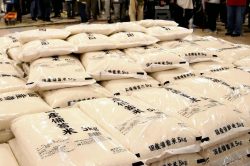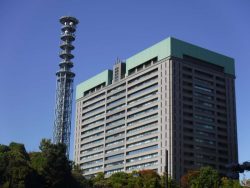TEPCO Begins 2nd Trial Retrieval of Debris at Nuclear Plant; Analysis Will Seek Information to Support Larger Operations

18:00 JST, April 15, 2025
Tokyo Electric Power Company Holdings, Inc. began its second removal of nuclear fuel debris from the No. 2 reactor at the Fukushima No. 1 nuclear power plant in a trial operation on Tuesday.
It will collect debris at a different location from the first trial last year and spend about 10 days moving it outside the reactor. The debris will be analyzed to gain information that may be useful in selecting the methods and tools needed for larger-scale removal in the future.
According to TEPCO, a retrieval device resembling a fishing rod that can extend up to 22 meters was inserted at 10:03 a.m. from the side of the reactor through a guide pipe. The device penetrated the isolation valve that separates the containment vessel from the outside.
From Wednesday onward, a claw-like gripper hanging down from the retrieval device’s cable will pick up pebble-like debris weighing up to 3 grams at the bottom of the reactor containment vessel.
This time, debris will be collected near the center of the containment vessel, about 1 to 2 meters away from the first collection point, by adjusting the length and angle of the device.
TEPCO will compare the composition and hardness of the two debris samples, to utilize the results for the next trial removals, of which there will be several. The comparison will also help with the selection of tools for the full-scale retrieval scheduled for the early 2030s.
The retrieval site may switch back to the first location depending on the situation inside the containment vessel, the company said.
In the 2011 Fukushima plant accident, meltdowns occurred in the Nos. 1 to 3 reactors, causing melted fuel to mix with the metal and structures inside the reactors to form debris. The debris continues to emit strong radiation that can kill people within minutes if they come close to it, requiring the operation to be done remotely. A total of about 880 tons of debris are estimated to exist in the Nos. 1 to 3 reactors.
In November, for the first time in more than 13½ years since the accident, TEPCO succeeded in taking out about 0.7 grams of debris. The removal operation is considered the toughest element of the entire decommissioning process, which the company aims to complete in 2051.
"Society" POPULAR ARTICLE
-

Japan’s Maglev Shinkansen’s Partially Completed Station Unveiled; Station Will Be Only Underground Stop Between Shinagawa, Nagoya
-

Fukuoka City School Lunch Menu with Only One Karaage Fried Chicken Draws Criticism; Mayor Vows to Improve School Meals
-

2025 Expo Osaka : Expo Venue Hit by Swarms of Chironomids; Organizers Cooperating with Pest Control Companies, Others to Deal with Outbreak
-

Japanese Students at Harvard Worried by U.S. Move; 260 at Harvard Part of 13,500 Japanese Students in U.S.
-

Japanese Swords Banned from Tourist Programs, Putting Damper on the ‘Samurai Experience’
JN ACCESS RANKING
-

Aichi Rice Production Under Siege from Warming Climate; Record Heat Stunts Crop Growth, Causes Greater Pest Activity
-

Japanese Researchers Develop ‘Transparent Paper’ as Alternative to Plastics; New Material Is Biodegradable, Can Be Produced with Low Carbon Emissions
-

Japan’s Cooperation in Alaska LNG Development Project Emerges in Japan-U.S. Tariff Negotiations; But Industry Concerns Exist
-

Trump: Nippon Steel Will Part Own U.S. Steel, U.S. to Be in Control; Share Distribution, Other Details Remain Unclear
-

Japan’s Maglev Shinkansen’s Partially Completed Station Unveiled; Station Will Be Only Underground Stop Between Shinagawa, Nagoya
























